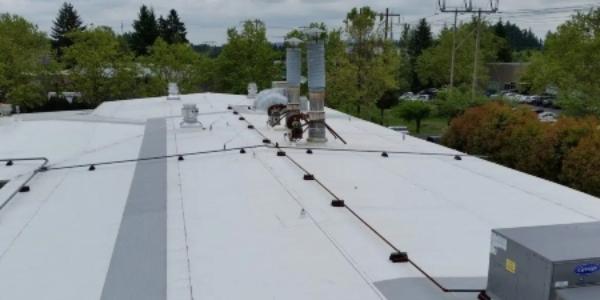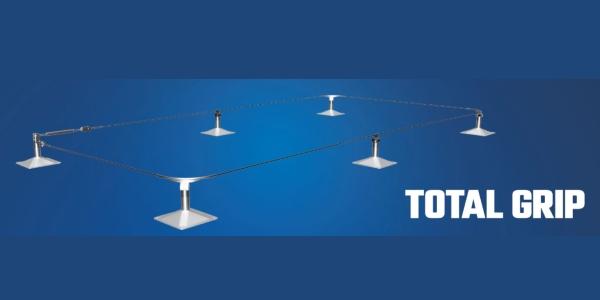10 commercial roofing problems to keep an eye out for

By Pacific West Roofing.
Extend your commercial roof’s lifespan with regular inspections and timely maintenance to avoid costly disruptions while protecting your assets.
You’ve likely heard the saying, “an ounce of prevention is worth a pound of cure.” While Benjamin Franklin originally said this about fire prevention, his wisdom perfectly applies to commercial roofing. For business owners and facility managers, a solid, well-maintained roof is as crucial as it is for homeowners. It acts as the primary shield against the elements, safeguarding the building and everything within. Alternatively, a deteriorating roof can result in expensive repairs, operational disruptions and jeopardized assets. Here at Pacific West Roofing, we have compiled a list of common commercial roofing problems you should keep on your radar.
Regular roof inspections, maintenance and immediate repair are your best assurances that your building’s roof is in good working order. Commercial roofs are unique from residential roofs in their design and the materials used, but just like residential roofs, they can experience a variety of problems over time that often go undetected until leaks and other tell-tale signs of trouble begin to appear. Regular inspections by an experienced commercial roofing professional can expose potential problems before they occur, prevent costly damage and extend the life of the roof.
The most common commercial roof problems include:
1 — Unprimed or poorly installed flashing separation, which causes 95% of flat roof leaks
2 — Failing or debris-filled pitch pans due to recessed filler
3 — Punctured or impacted roof membrane and broken seams due to poor installation
4 — Too few fasteners in the base sheet and perimeter flashings
5 — Missing vent and chimney caps
6 — Standing water due to blocked drains and poor roof slope design
7 — Damaged underlying substrate
8 — Aged and failing caulking which should be inspected
9 — Blisters, buckles and cracks in asphalt-based roofing products
10 – Visible water stains from a leak
The most obvious signs of trouble are the visible water stains from a leak. Pin-pointing a leak in a flat roof is problematic as water run-off is much less predictable than on a pitched roof. To further compound the matter, by the time a leak is visible, other damage to the building has likely occurred from the accumulating moisture. In this case, an ounce of prevention really is worth a pound of cure — or more!
Original article source: Pacific West Roofing
Have a question? AskARoofer.
Find your local roofing contractor in the RoofersCoffeeShop® Contractor Directory.










Comments
Leave a Reply
Have an account? Login to leave a comment!
Sign In